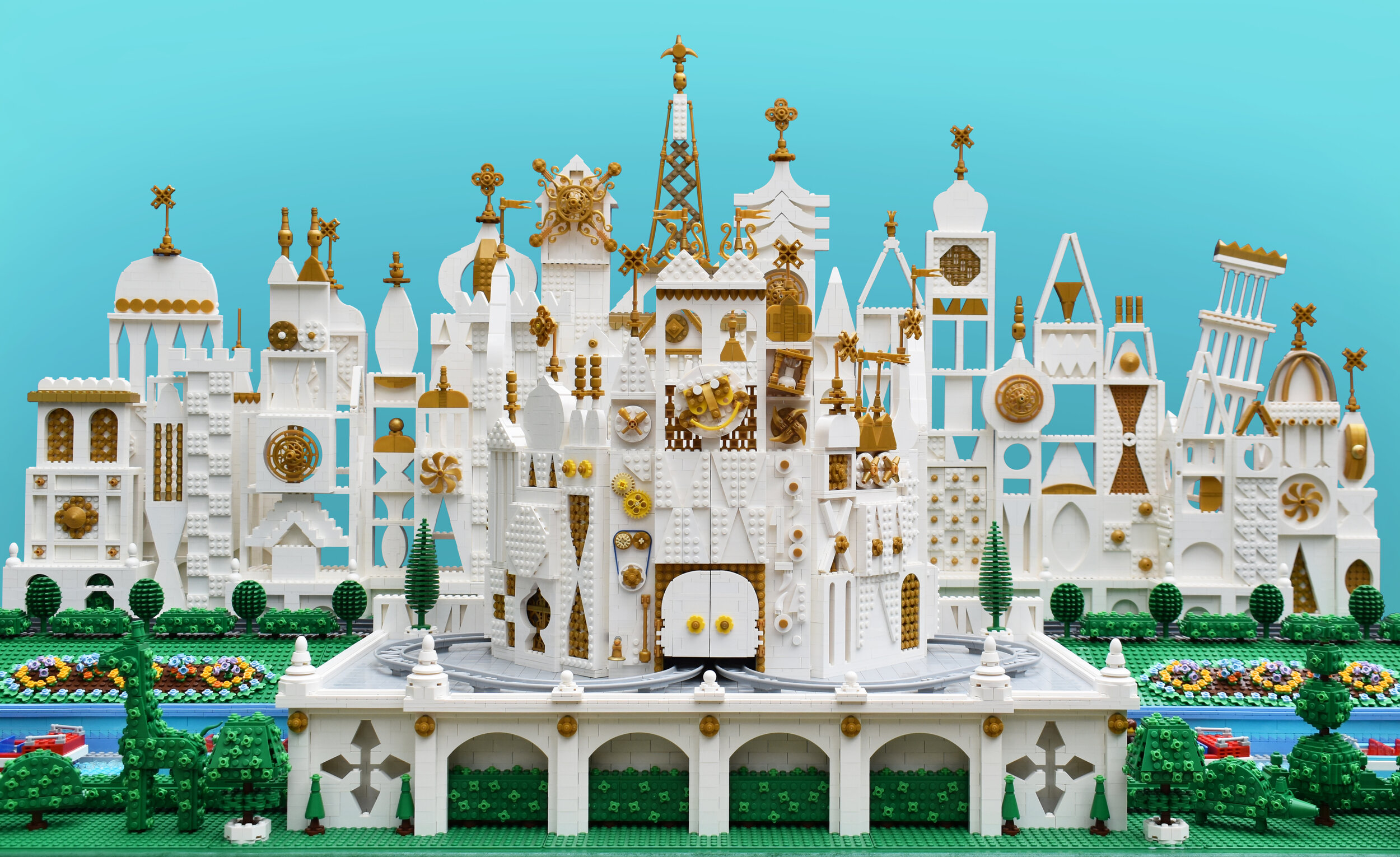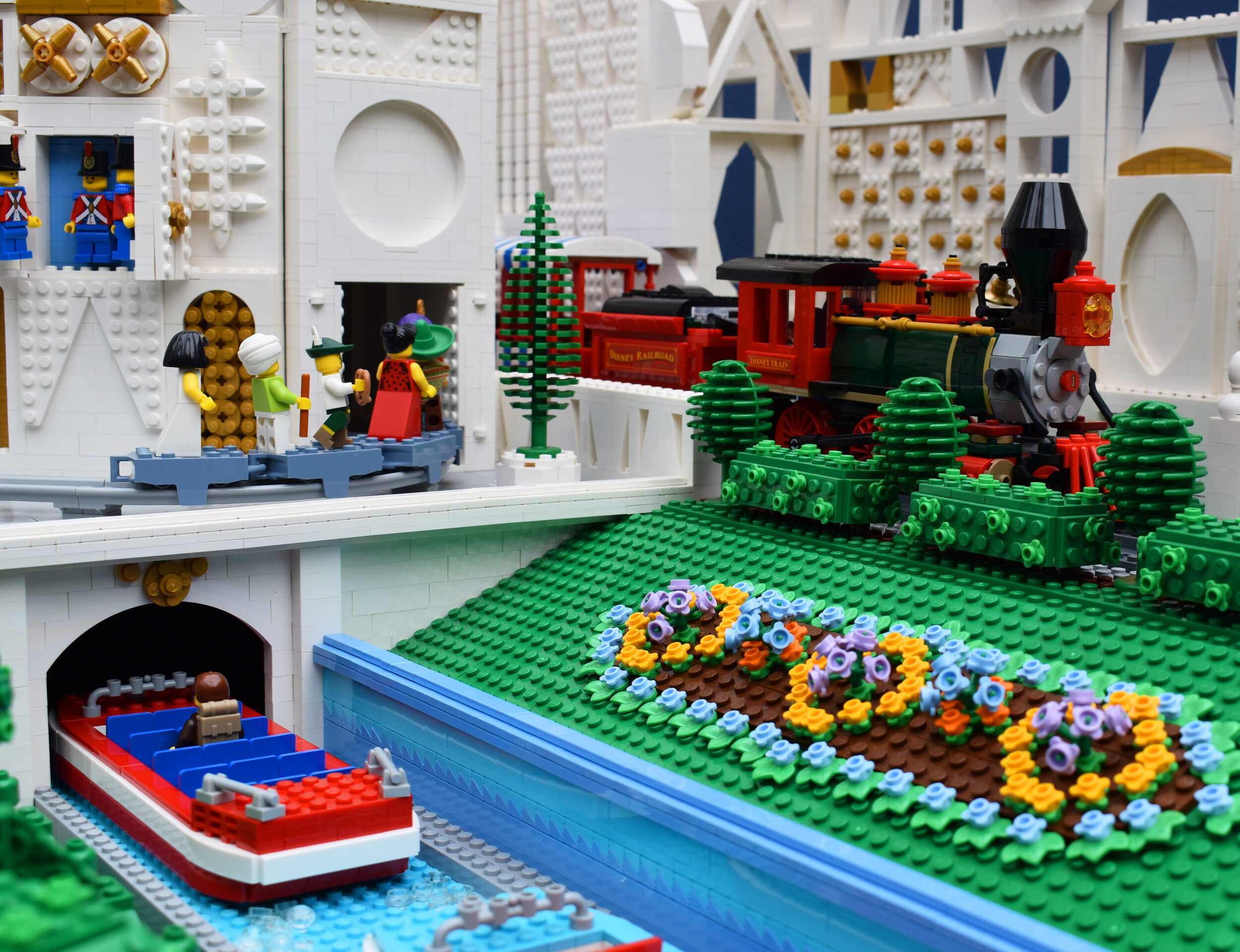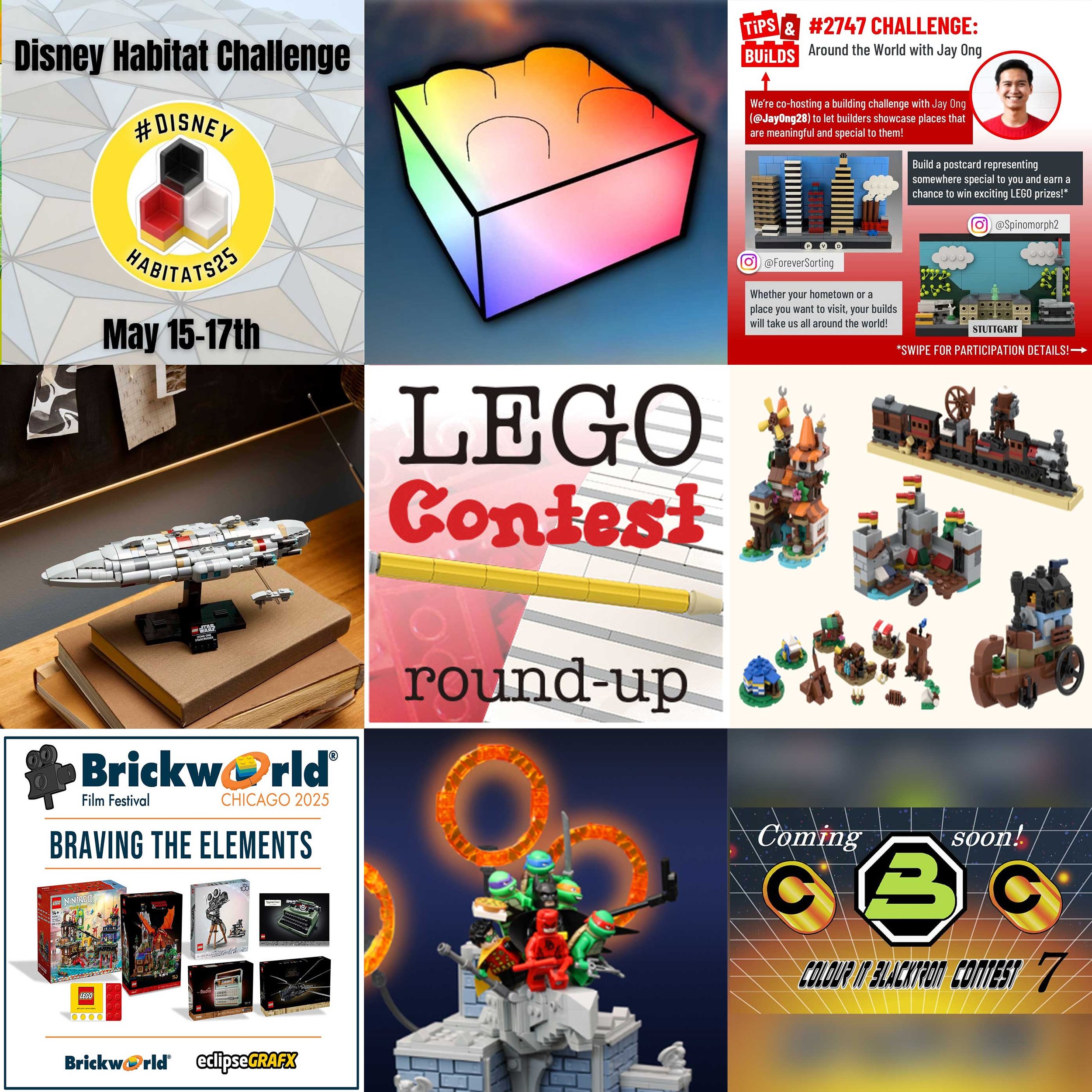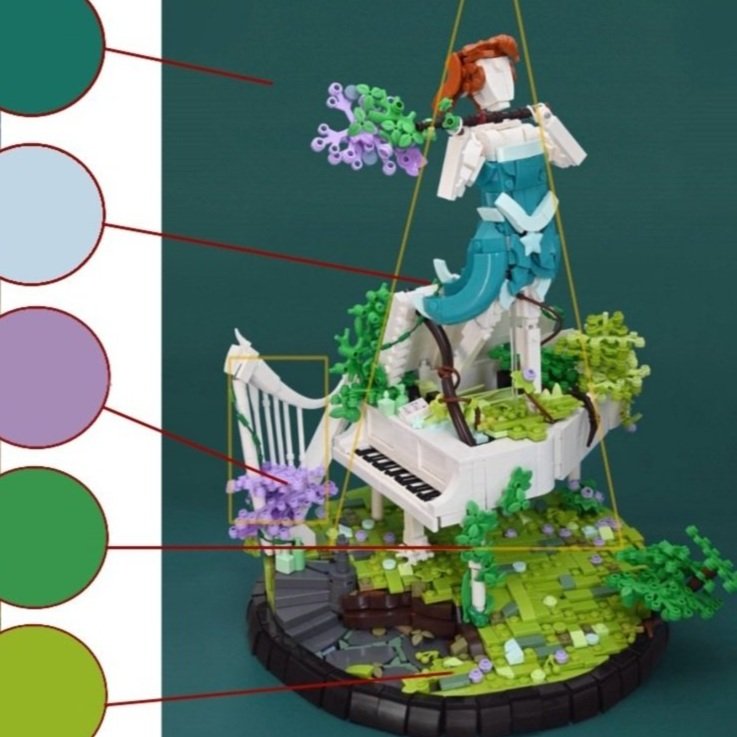It's a Small World After All
/Best of BrickNerd: Weekend Highlight — Article originally published May 29, 2021.
In honor of the 55th anniversary of the opening of “It’s a Small World” at Disneyland, BrickNerd is featuring a guest post by builder Bill Vollbrecht who has recently completed this stunning LEGO display of the iconic ride. Bill shares how this impressive build began, the hardest details to replicate, and the risks of carrying a large MOC down a staircase...
When I was a child of four or five years old, our family was visiting my Great Aunt and Uncle in Costa Mesa California. While the adults caught up with each other, I looked for something to occupy my time—no easy task in the childless elderly couple’s home! But looking at their bookcase, I came across a Disneyland guidebook from the late sixties. Having never been to the park, I assumed it was all about the same cartoons we would watch during The Wonderful World of Disney on Sunday nights.
Instead, it was filled with photos of fantastical-themed lands and whimsical architecture, but it was when I turned the page and saw the double page layout of the “It’s a Small World” ride facade, my young mind couldn’t quite comprehend what I was seeing. It was so odd and beautiful, complex and mesmerizing. The book told me the facade was designed by the legendary Disney Imagineer Mary Blair. I asked my Aunt if I could have some paper and pens so I could attempt to capture this crazy image and take it home with us. This was one of my earliest memories of drawing a picture and it stuck with me until I was finally able to see the ride in person on my first trip to Disneyland 30 years later.
Image via Wikipedia.
In the time in between, I had moved to California to become a Master Model Builder at LEGOLAND California. As an artist, LEGO fan, and now official LEGO Builder, I thought this could be something that would look great as a LEGO model! I took a bunch of reference images that day as well as many more photos on subsequent trips to Disneyland.
However, it would take a few more years of collecting to get enough LEGO parts to attempt to capture the spirit of the simple, yet surprisingly complex design in LEGO. Luckily, The LEGO Group was being very cooperative by releasing lots of great new SNOT bricks and a plethora of gold-colored elements that would eventually help make this build a reality.
To start the design, I used some old school LEGO Model Builder graph paper to figure out the scale. The jumping-off point was to build the iconic clock face from the central tower.
Once that was built, the rest of the model could be scaled to that—with everything being roughly in minifigure scale.
The actual Disneyland ride facade is a series of thin panels attached to a simple steel framework. Being limited to recreating things as close to the original as possible, all walls had to be either 1 or 2 knobs thick. Given the crazy amount of SNOT-work needed to recreate the geometric shapes and textured panels, I was going to have to engineer some new (to me anyway) building techniques.
I decided that it would be nice to have a complete model to display at the Bricks LA LEGO Convention in Pasadena in 2020 since one of the highlights of the show is that a large group of AFOLs go to Disneyland the Monday after the convention! After some procrastination and a few marathon building sessions, I had a decent facsimile ready to show.
It got a good reception and even won an award, but I felt it still needed MORE. Originally, I only focused on the main visual element of the facade, but in order to tell the whole story of the ride, I felt it still needed the railroad tracks and train that runs along the back walls, the waterway and boats, the sloping green hills, flowers and topiary gardens, and more layers of the back facade.
A few short months after the convention, the world turned upside down due to the global COVID-19 pandemic, and we were now under lockdown/quarantine and I suddenly found myself with loads of free time and a room full of LEGO. So I set upon the task of disassembling some of the sections of the original build and started working out how to raise everything up and include all of the new elements.
The first part of the revamp was utilizing the relatively new LEGO roller coaster track pieces to create a place for the “parade of nations” dolls that emerge from the clock tower every 15 minutes (helped greatly by the CMF line of minifigures). Once the track was fitted within the existing doorways I could then build the platform that everything sits on top of and add the openings below to act as the entrance and exit for the boats.
At this point, the overall scale was coming together and I realized it would need a wooden base to hold everything for transport to the various conventions and shows. It was also decided that the new design would be modular for easy breakdown for transport and storage. As it currently stands, the base measures a giant 150cm x 75cm (5 feet x 2.5 feet) and the overall height from the base to the top of the stylized Eiffel Tower was 75cm, making it the largest model I’ve made at home!
Once everything was assembled to my satisfaction, I attempted to take some pictures of it to post on my Instagram account: Parks_and_Wrecked_Creations. But no matter what configuration of camera, lighting, and backdrops, I just could not get a clear picture of the overall model. I came to the inevitable conclusion that it needed to be photographed outdoors on an overcast day for the best lighting. Normally this isn’t a problem with my smaller models, but this was a LARGE model: heavy and yet delicate and located upstairs in my LEGO studio! Moving it was going to be a test of the modularity of my design.
Everything was transported downstairs just fine—until I had to carry the largest and heaviest center section of the model. It barely cleared the narrow doorway out of the room, shearing off the top of the Eiffel Tower section. Carrying it down the stairs, I thought it was free and clear when I reached the bottom step—except I was one step off! Instead of the floor, my leg crashed down the height of TWO steps jolting me and almost causing me to drop the model. The back wall snapped free and crashed to the floor, shattering into hundreds of smaller pieces. Thankfully, the main structure remained intact! After a few hours of rebuilding and some slight modifications to strengthen the structure, it was good to go.
After a nice photoshoot, I brought everything back inside, disassembled the various sections and packed everything up so it will be ready to show whenever the next LEGO convention comes back. This ride will always be special to me—as special as it was when Walt Disney himself invited children from all around the world for its dedication 55 years ago. In real life or in LEGO form, with children or minifigures, it is indeed a small world after all.
What other Disneyland attractions would you like to see made out of LEGO? Have you ever had an accident while transporting a MOC? Let us know your thoughts in the comments below.
Do you want to help BrickNerd continue publishing articles like this one? Become a patron to show your support, get early access, exclusive swag and more.

































